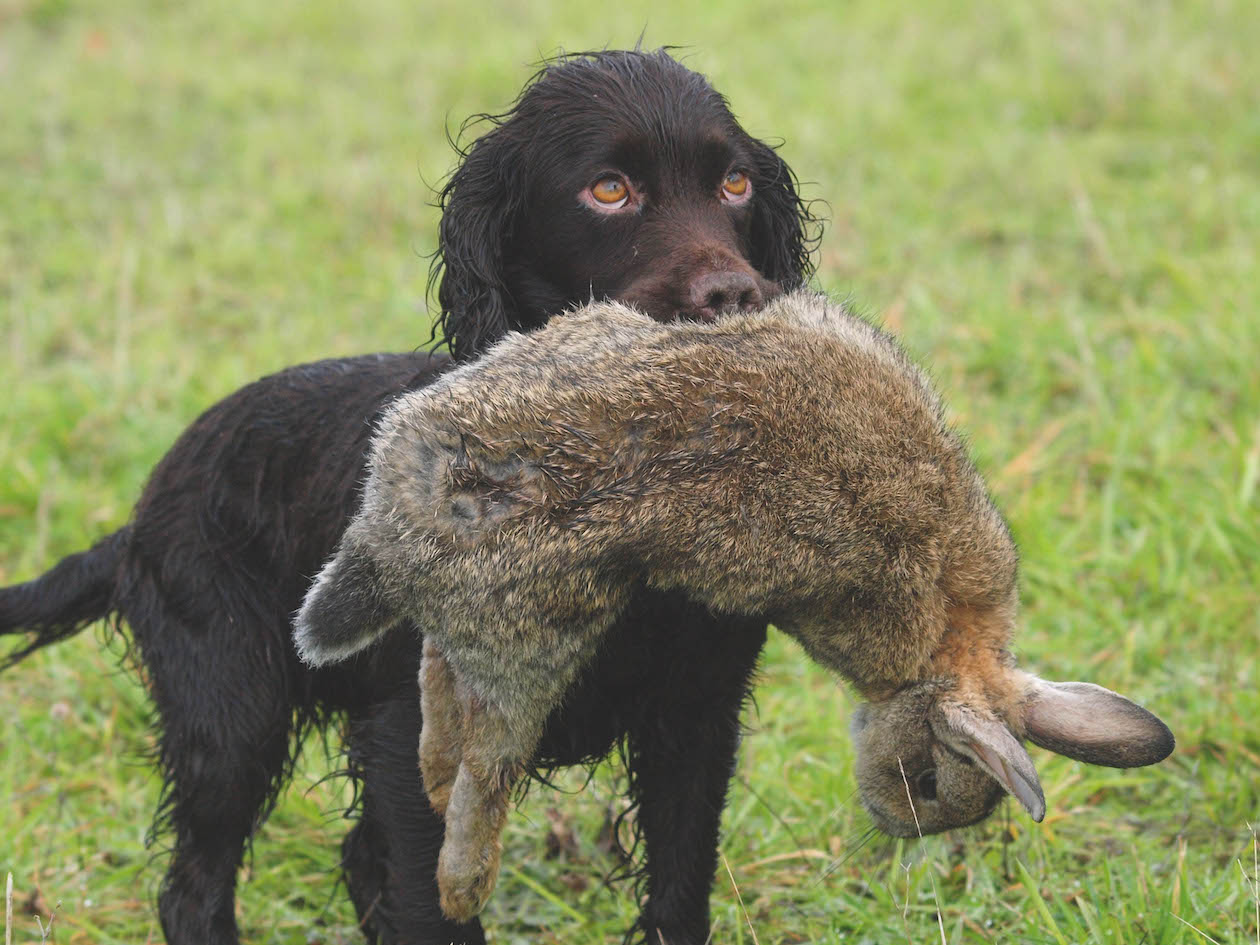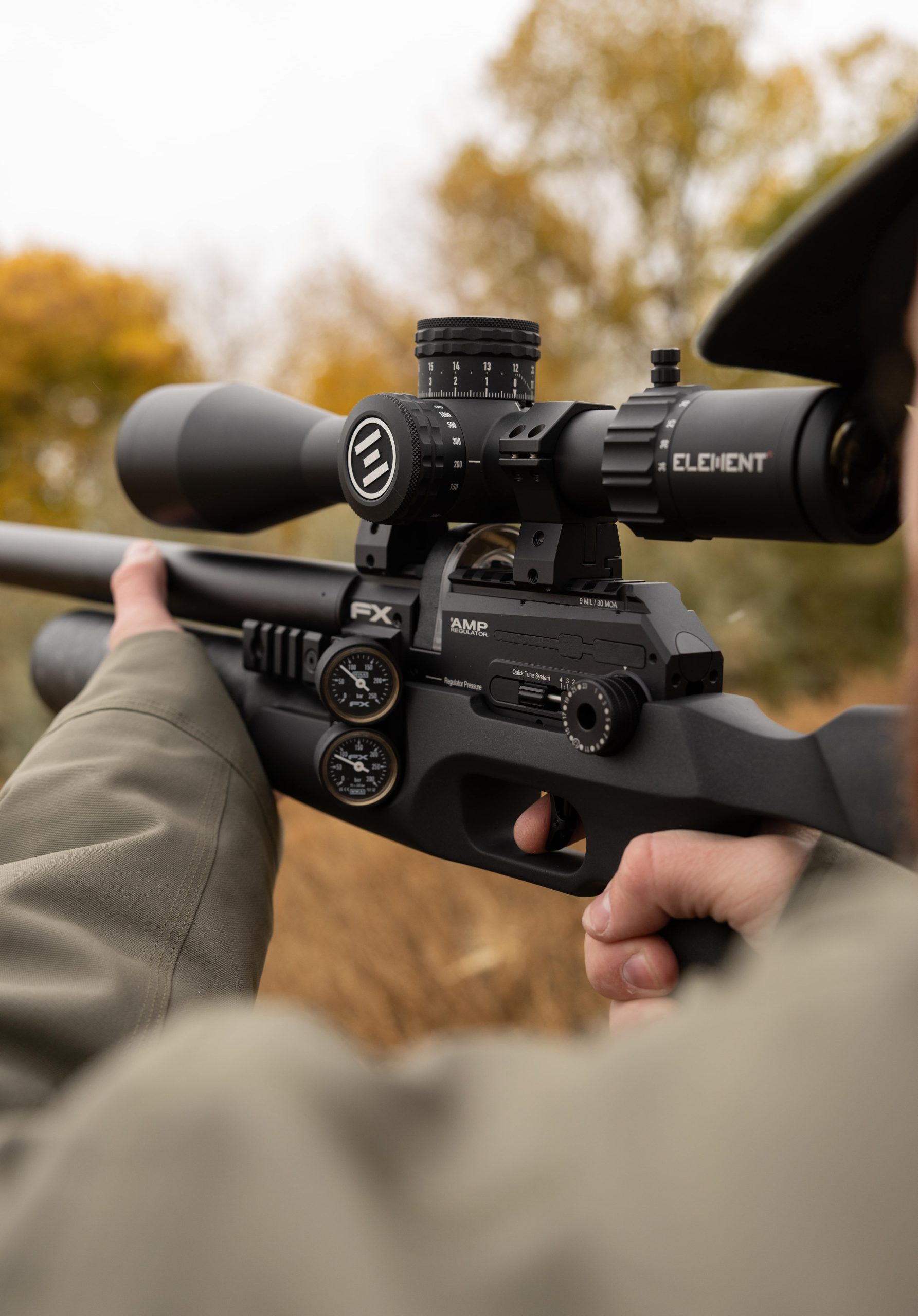Airgun news
Airguns
Shooting
Gundog rabbit trials
Would you like to speak to our readers? We offer sponsored articles and advertising to put you in front of our audience. Find out more. A baby bun
A baby bun
Once the staple quarry of the rough shooter, the humble rabbit has become something of a rarity in the countryside, with the result that generations of modern gundogs have little or no experience of them. Their scarcity may be most pronounced in southern Britain, but the rabbit population of the UK is a fraction of what it once was. (Read rabbiting – a walked-up run.)
In the early 1950s, Britain’s wild rabbit population was estimated to be between 60 million and 100 million — a staggering number of animals. Shooting men took them for granted, farmers cursed them and a whole host of predators, from buzzards to foxes, feasted on them.
Myxomatosis
Then, in June 1952, a retired French physician, Dr Paul-Félix Armand-Delille, obtained some myxoma virus and inoculated a pair of rabbits. He released them close to his home in the Eure-et-Loir area, to the west of Paris. The disease spread through the rabbit population like wildfire, though it wasn’t until October of the following year that it was recorded in England.
No one knows how it reached us, but it seems certain that it was brought here deliberately. To begin with, its impact was limited, but diseased rabbits were deliberately released in new areas around the country, so it was widespread by the end of 1954.
Within a few years, it was estimated that 99% of our wild rabbits had died. Intriguingly, though, the rabbit’s range wasn’t reduced, for sufficient animals survived to maintain its widespread distribution throughout almost the entire British Isles. Rabbits are only absent from a few offshore islands.
Myxomatosis never went away and rabbit populations would build up, only to collapse in the autumn when the disease returned. However, it started to lose its virulence as animals gained genetic resistance and there were signs of populations recovering.
Then, in 1992, rabbit haemorrhagic disease (RHD) appeared in UK domestic rabbits. It soon reached the wild population and has been with us ever since. In recent years, a new variant of RHD — known as RHD2 — has been prevalent and this has suppressed rabbit numbers.
Thus, I was delighted with a recent rabbit encounter. I was walking, dogless, in the late afternoon alongside a damp valley fen. On the other side of the footpath, on slightly higher ground, were a series of small, uncultivated fields that clearly provided rabbit paradise, for they appeared to be one extensive warren.
A sweep of the binoculars revealed 50, 60, possibly 70 rabbits — big ones, medium ones, baby ones. There were rabbits everywhere, all doing what rabbits do, which is eating, chasing and sitting enjoying the evening sunshine. I can’t remember the last time I saw so many in one place. (Read how deep is a rabbit burrow?)
This sighting was a one-off and I haven’t seen significant numbers anywhere else, but it was a reminder that the rabbit isn’t lost from our countryside and that numbers may yet recover. Whether this is a good thing depends on your point of view. Farmers certainly won’t welcome them, but it’s great news for the rough shooter. There’s arguably no finer sport than hunting rabbits with a good spaniel.

Many modern gundogs may have little or no experience of rabbits
Whether there will ever be sufficient numbers again for rabbit trials to become a feature of the spaniel-trialling calendar remains to be seen. Rabbit trials had a great deal in their favour, not least that they were much cheaper to run than those that depend on costly pheasants or partridges. My experience of rabbit trials is limited, although 20 years ago I went to watch a novice spaniel trial that was to be held exclusively on rabbits.
Rabbit trial
I had always wanted to see a rabbit trial, as it promised the chance to see spaniels working at their best. The trial was held in October on an estate in Hampshire. After an hour of spaniels hunting hard and furiously, not a single rabbit had been seen, let alone shot.
The trial was paused while an urgent discussion was had with the gamekeeper and host. They agreed that pheasants could be shot instead of rabbits, so the trial continued. To this day, I wonder why it went ahead, as the keeper must have known there were so few rabbits on his ground.
Vaccination
Introducing puppies to rabbits in pens always used to be an essential part of gundog training, but penned rabbits are no more resistant to RHD than wild animals, so far fewer trainers have pens than was once the case. There is, however, a vaccination available against the disease. It’s obviously much easier to vaccinate domestic rabbits than wild ones.
Many trainers swear by wild rabbits, but semi-tame domestic rabbits, particularly one of the larger breeds such as Flemish giants, are equally effective for puppy training and easier to work with.
My spaniels and I encounter far more hares than rabbits these days. I’ve never come across a hare pen in the UK, but I was once shown one in the south of France. The chasseur that had the pen on his farm was very proud of his lièvres (hares). As far as I understood, the pen was used for breeding hares (a favourite French quarry species), not for dog training.
Related articles
Shooting
Shotgun
Let’s bite the bullet
The ban on lead shot for all game shooting is moving apace so it’s time to find the best eco-friendly ammunition that suits you and your rifle
By Time Well Spent
Shotgun
Shotgun buying guides
Starting out? Make sure it fits
If you’re buying your first clay gun, the right fit takes precedence – not good looks, the brand your mate’s got or even price – warns Paul Austin
By Time Well Spent
Manage Consent
To provide the best experiences, we use technologies like cookies to store and/or access device information. Consenting to these technologies will allow us to process data such as browsing behavior or unique IDs on this site. Not consenting or withdrawing consent, may adversely affect certain features and functions.
Functional Always active
The technical storage or access is strictly necessary for the legitimate purpose of enabling the use of a specific service explicitly requested by the subscriber or user, or for the sole purpose of carrying out the transmission of a communication over an electronic communications network.
Preferences
The technical storage or access is necessary for the legitimate purpose of storing preferences that are not requested by the subscriber or user.
Statistics
The technical storage or access that is used exclusively for statistical purposes.
The technical storage or access that is used exclusively for anonymous statistical purposes. Without a subpoena, voluntary compliance on the part of your Internet Service Provider, or additional records from a third party, information stored or retrieved for this purpose alone cannot usually be used to identify you.
Marketing
The technical storage or access is required to create user profiles to send advertising, or to track the user on a website or across several websites for similar marketing purposes.








